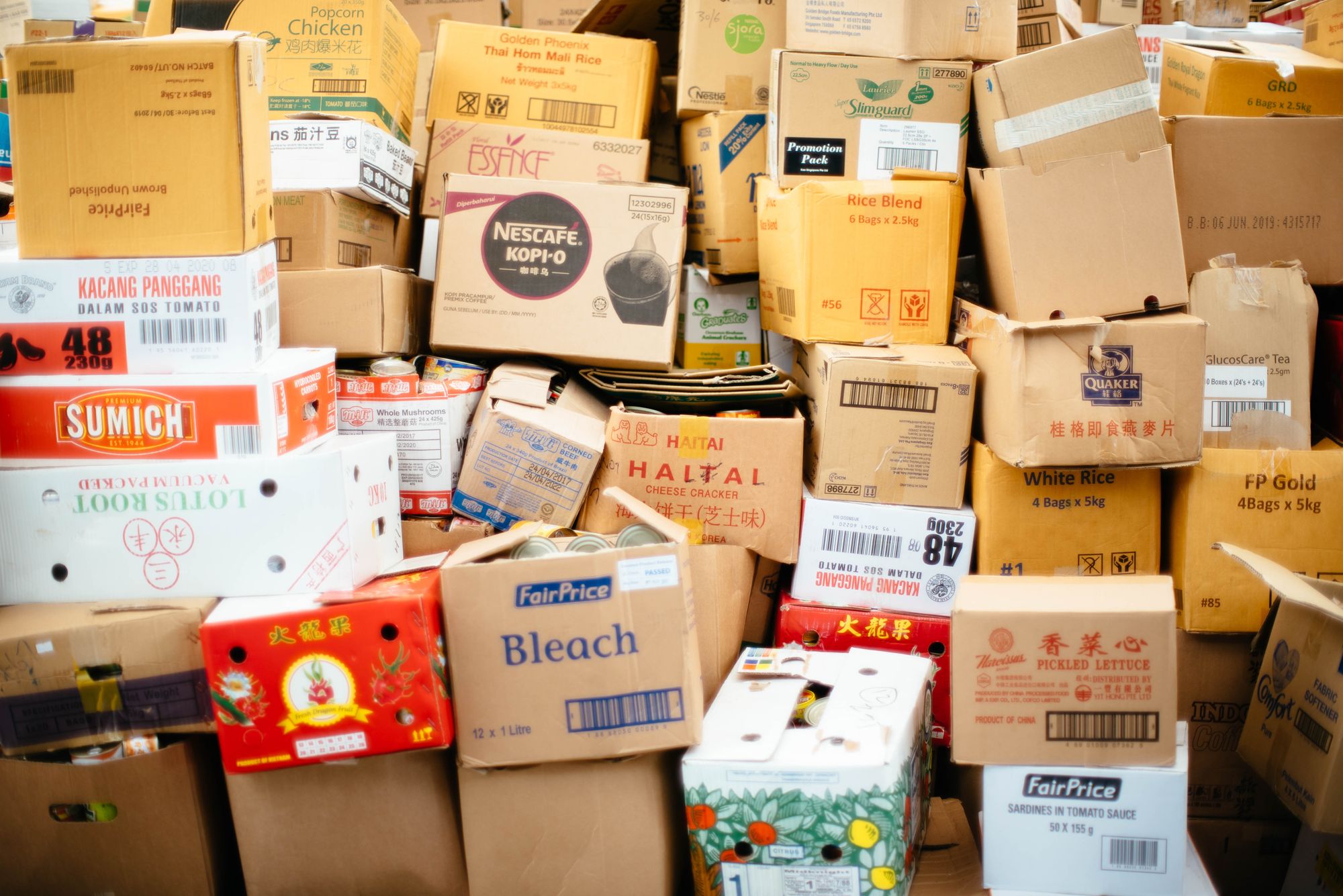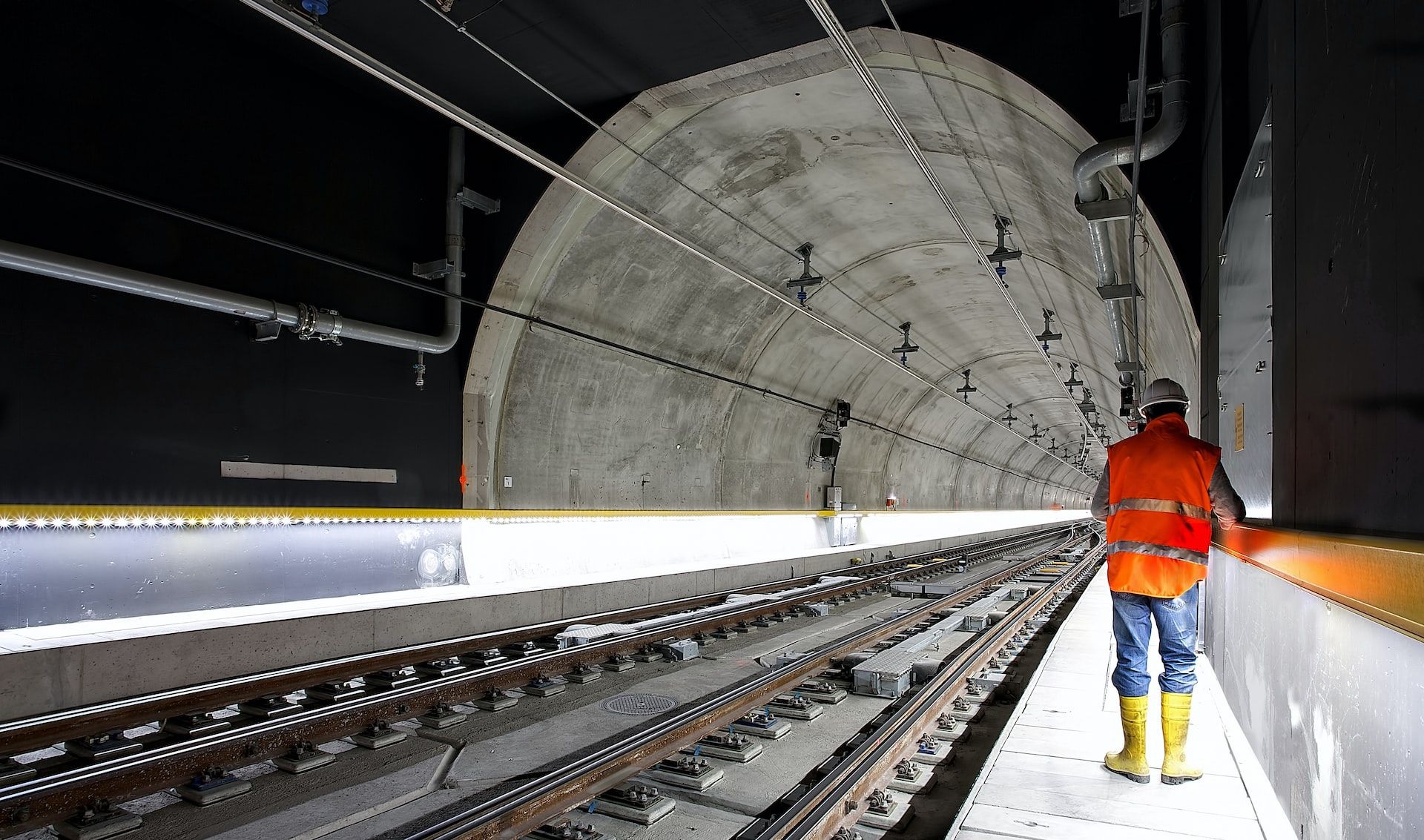Setting up multilocation inventory management can be complicated for many growing enterprises. It becomes challenging especially if they also have scattered manufacturing plants across the nation.
Therefore, implementation of the proper tools and procedures is crucial to making sure that business continues to run regularly.
So, the question arises —
How will companies manage the inventory, logistics, and management of several locations in a world of perpetual expansion?
The most comprehensive solution is multi-location inventory management.
Multi-location inventory management refers to companies that, by definition, manage multiple facilities. To effectively manage several logistics centers, multi-warehouse software that integrates the operations and inventories of various facilities is required.
In today’s article, we’ll understand about multi-location inventory management, challenges, and its advantages. Before we delve into this guide, let’s take a look at the table of content:
- What is Multi-Location Inventory Management?
- Does Your Business Require Multi-Location Inventory Management?
- Challenges of Multi-Location Inventory Management
- Multi-Location Inventory Management Advantages
- Tips to Successfully Manage Multi-Location Inventory
- Frequently Asked Questions (FAQs) Associated with Multi-Location Inventory Management
- Final Thoughts
- How Deskera Can Assist You?
- Final Takeaways
Let's Start!
What is Multi-Location Inventory Management?
Multi-location inventory management is a system used by businesses to track and manage inventory in multiple locations.
This system provides a unified view of inventory across all locations, enabling organizations to more effectively monitor and manage their inventory.

Furthermore, it also helps to reduce costs by reducing inventory levels, improving stock turns, and increasing efficiency.
Multi-location inventory management can be implemented through a variety of software and systems. It includes enterprise resource planning (ERP) systems, warehouse management systems (WMS), and supply chain management (SCM) systems.
Does Your Business Require Multi-Location Inventory Management?
Yes, if your business has multiple locations and needs to manage inventory across all locations, multi-location inventory management is essential.
Multi-location inventory management systems allow businesses to track and manage inventory in multiple locations in real-time, eliminating the need to manually track and transfer inventory between locations.
Multi-location inventory management systems also provide better visibility into inventory levels and trends and can help businesses reduce costs associated with inventory management.
Moreover, scaled site management is a challenging task, even for professional companies with vast experience. If you're not careful, having many sites might quickly turn into a nightmare. This is due to communication problems between warehouses, problems with product transportation, and a lack of general administration.
Furthermore, spreadsheets, as they do with many other endeavors, won't work as your business grows. Utilizing a multi-location inventory management system will simplify your life and ultimately lead to more profitability because it will consolidate all of your information into a single, automated solution.
There are a wide variety of reasons why such large-scale inventory management is necessary.
Following, we've discussed a few of the key figures:
Lean Manufacturing
Frequently, a single production line can be spread across several sites.
Similar to how a vehicle is made, the seats and engines are constructed in one location, then sent to another location for final assembly.
Subassemblies are assumed to move to the next workstation almost constantly and hardly ever remain immobile. Lean inventory, a system that was developed and has since become common in manufacturing, is another name for this tactic.
Outsource Manufacturing
Only a few companies are equipped to produce their products totally on a global scale.
You require a lot of resources in order to manage production and inventories in this way. However, many businesses outsource manufacturing operations both domestically and internationally.
39% of US companies say they have increased the amount of outsourcing they do recently. Outsourcing or contract manufacturing often results in lower costs and the release of resources that are better utilized elsewhere.
If you want to be in a position where you can not only track the inventory and production status of your partners, but also actually order supplies for them, contract manufacturing software might be quite helpful.
Coordinate with Manufacturing
Your production line and manufacturing path probably started in one location, but it doesn't mean it will always remain there.
Numerous manufacturing businesses really find themselves scattered among numerous manufacturing sites as a result of the availability of educated labour, expensive rent, and even direct customer access. Especially if they are marketing to a broad range of customers who are dispersed across state or international borders.
It does, however, indicate that you'll also require a storage space for your resources in each of these locations. If not, you would need to place repeated orders for materials for fresh orders.
Retail Outlet
Many manufacturers and direct-to-consumer companies claim that selling goods at one's own retail locations can draw in a completely new clientele.
Away and Glossier, two stalwarts of this company model, each have their own flagship locations. This implies, however, that companies must start managing their inventory across many locations, even if only for finished goods.
Risk Management
There are many risks involved in keeping all of your inventory in a single warehouse.
Any shipping problems or even an unlikely fire might have a big effect on the business. Inventory backup sites give you a safety net in case of emergency and help to lower this risk.
Potential Financial Savings
Setting up a backup warehouse may at first seem counter-intuitive in terms of cost-cutting.
But keep in mind that the cost of labor and transportation could be much greater depending on where your warehouse is located. If you are further distant from customers and delivery infrastructure, your costs will increase.
Additionally, you might speed up delivery times for customers and streamline the order fulfilment process.
Inventory for Retailers or Resellers
Despite the growing popularity of the direct-to-consumer business model, many manufacturers still sell a portion of their inventory through middlemen.
In these regions, they rarely need to maintain inventories, albeit on occasion they will in specific circumstances. A reseller, for instance, will only pay for the goods once it has been sold if you and the reseller have a consignment inventory agreement.
Challenges of Multi-Location Inventory Management
Inventory management can be difficult for businesses that are growing, especially as they take on more locations and warehouses. You might run into some of the following issues:
1. Properly Tracking and Managing Inventory:
Having multiple locations with different inventories can make it difficult to keep track of where each item is located, how much is available at each location and when to replenish stock.
2. Managing Supply Chain Costs:
When dealing with multiple locations, it costs more to ship and store products across multiple locations and manage the resulting supply chain.
3. Keeping Accurate Records:
Keeping multiple locations synchronized and up to date can be a challenge, as it requires accurate and up-to-date records to ensure that inventory is not overstocked or understocked at any location.
4. Managing Inventory in Real-Time:
With multiple locations, it can be difficult to accurately monitor inventory in real-time and make any necessary adjustments quickly.
The more locations and warehouses you employ, the harder it will be to manage inventory issues like overstocking or general inventory loss.
This is a typical result of a long supply chain, and it can occur to any significant or growing business. By implementing a multi-location inventory solution, you can ensure that there are plans in place to monitor and track inventory levels.
5. Implementing an Efficient Tracking System:
It is important to have an efficient system in place for tracking inventory across multiple locations, which can be time-consuming to set up and maintain.
6. Communication:
Any business must place a high priority on collaboration and communication, especially one with a diverse clientele and geographic reach.
In several diverse warehouses, each with its own set of tools, procedures, and best practices, communication can easily break down, leading to errors and preventable accidents.
When launching many locations, a multi-location inventory management solution helps ensure that a consistent, all-encompassing communication strategy is in place, right up to the point of sale (POS) and checkout.
7. Order Bottlenecks:
Ineffective inventory management across various locations and warehouses can result in bottlenecks, slow down production and warehouse operations, and aggravate consumers. This is fairly typical if each warehouse has its own set of operational policies in place.
An effective order management solution can help you combine warehouse operations and regulations into a simple, streamlined process.
At order to effectively handle all of these issues, businesses with several warehouses set up the procedures in each of their logistics facilities using management software.
Multi-Location Inventory Management Advantages
When a business expands, many people find that spreadsheets or small-scale software solutions are inadequate, which increases the demand for additional warehouses.
The usage of multi-location inventory management software has a number of advantages, including:
1. Improved Communication
A warehouse management system can act as a channel of communication for numerous parties and can notify you of any delayed orders or product arrivals at each warehouse. This improves communication across warehouses.
With the help of best software solution such as Deskera, you'll have better control over the numerous warehouses and supply chain phases.
2. Rapid Deliveries
Having many warehouses will speed up the movement of goods in and out. Additionally, you may have more warehouses the closer the products are to the customers.
This covers concepts like e-commerce micro-fulfillment centers. These smaller warehouses are now being used by businesses like Amazon and Walmart to ensure that delivery can be delivered in hours rather than days or weeks.
3. Cut Costs
Distribution can be made simpler and more affordable by managing items at geographically scattered sites, from logistics to fulfilment.
For instance, if you have a single warehouse in Boston but a significant customer base in New York, your transportation costs may add up quickly. The decrease in shipping and delivery costs may make it feasible to construct a second facility in New York.
4. Increased Customer Satisfaction
With a variety of warehouses and a software system to match, businesses will be better equipped for quicker deliveries at cheaper costs.
What significance does faster customer delivery have? According to an e-fulfillment Service study, more than 75% of customers demand same-day or express shipment, which is something that only around half of stores now provide.
You can quickly develop a following of devoted customers if you can live up to their expectations.
5. Flexible Inventory Control
The usage of numerous warehouses can be quite beneficial for businesses that sell a range of goods to a variety of customers.
A company that sells two products that operate well in distinct countries might better serve its customers while retaining consistent revenues by setting up separate warehouses in the regions.
6. Reduction of the Carbon Footprint
Housing and maintaining inventory at many warehouses can considerably reduce carbon emissions by cutting the distance needed to deliver orders. With several warehouses located close to a larger client base, fuel emissions from cars and airplanes can be reduced.
Furthermore, studies demonstrate that specialized inventory management systems, through their greater understanding of travel expenses and constraints, can considerably lower your carbon footprint and encourage more sustainable business practices.
7. Lower Risk
Many businesses have altered their perceptions about warehouses as a result of the COVID-19 pandemic's emphasis on the possible benefits of using numerous warehouses.
Consider how the epidemic restrictions changed according on the nation, city, or state you were in. If your company simply had one warehouse in one secure location as opposed to multiple warehouses dispersed over several secure facilities, you would have had more difficulty getting back to business as usual.
This also holds true for other unforeseen events, such natural disasters. By adopting a multi-location inventory management system and several warehouses, you can attempt to reduce the likelihood of such catastrophic calamities.
Tips to Successfully Manage Multi-Location Inventory
Managing several sites and warehouses may be challenging, even for well-established teams and enterprises. Before starting, keep the following guidelines in mind:
1. Implement a System for Multi-Location Inventory Management
Utilize a solution for managing inventory across several locations.
The right software can be extremely beneficial when it comes to managing the inventory of various sites.
You must look for software, such as material needs planning software, that can manage production, inventory, and several sites simultaneously.
Even while stock management is crucial, it is pointless if you don't consider how your resources are utilized and how your orders are fulfilled.
2. Warehouse Location Needs to be Considered
The location of your warehouses is crucial to the success of your multi-location project and the expansion of your business, as was already mentioned.
Your warehouses should be situated adjacent to one another and within easy reach of the target market. Even though it could be a difficult process, it can save money on logistics and transportation.
Additionally, you should map out where each warehouse is located because the cost of rent, taxes, and labor can differ depending on whether your warehouses are in an urban, rural, or suburban region.
3. Consider the Demand
When developing your multi-location plan, be sure to take your demand location into account. All parties affected suffer if a warehouse is located in a location with a small clientele since operating a warehouse may not be lucrative over the long term.
You can carefully construct a multi-location project that capitalizes on client need by understanding consumer demand, which will raise customer satisfaction and overall profitability.
4. Optimize Warehouse Layout
The way your warehouses are set up can have a big impact on how efficiently your business runs overall.
Spend the time to place your inventory of various resources as close as possible to the appropriate workstations. Additionally, keep products that you buy frequently close to the place where you ship.
Similar to this, you ought to carefully consider which of your warehouse's which stock. Any unnecessary additional transportation may ultimately delay delivery to your clients.
Even with the aid of the thorough map that is provided at the entry, employees can rapidly grasp the layout of the warehouse.
5. Set up Safety Stock
It is far more difficult to anticipate when to purchase additional supplies when inventory is scattered. especially if manufacturing happens in different places.
In order to avoid running out of stock and incurring delivery delays, you will need to keep a closer eye on your stock levels.
Setting a safety stock number and reorder points for each of your items is essential so that you don't have to use your safety net more frequently than necessary.
Frequently Asked Questions (FAQs) Associated with Multi-Location Inventory Management
Following we have discussed some crucial FAQs associated with multi-location inventory management. Let’s learn:
Que 1: How Do you Manage Inventories Across Several Locations?
Ans: Businesses can see every warehouse and its contents because of the capabilities and forecasts provided by a multi-location inventory management solution, giving you complete freedom to complete orders in the most efficient way.
Due to the availability of real-time visibility into every sales order and inventory item, there won't be any more confusion regarding current stock levels, buy order processing, or fulfilment logic.
Que 2: What Impact Does Having Multiple Locations Have on the Product?
Ans: Multi-location software solutions could assist your products in the ways listed below:
- Inventory levels have been regularly maintained by using safety stocks and replenishment reminders.
- Quicker delivery, with locally relevant goods.
- The adaptability to collaborate with a larger variety of producers, improving sustainability.
- Cut transportation costs, which had an impact on reducing transportation emissions.
Que 3: Location-Based Inventory: What is it?
Ans: The concept of location-based inventory states that a warehouse's inventory level will be determined by its location and the clients it serves.
Consider, for instance, if one of your warehouses is located in a location where a certain product your company sells is utilized disproportionately and frequently.
Moving a sizeable portion of the product to the nearby warehouse would benefit your company by cutting down on shipping expenses and increasing local demand.
Final Thoughts
When deciding whether to expand to more than one warehouse, ecommerce companies must consider a variety of criteria. Although it has the potential to be helpful, the activity has its own set of challenges, from the first logistical issues to maintaining the proper inventory levels.
In the end, it would be wise for any merchant to implement a strong multi-location ecommerce platform that transforms every order into a usable piece of data without adding extra costs, time, or effort.
How Deskera Can Assist You?
Deskera MRP allows you to closely monitor the manufacturing process. From the bill of materials to the production planning features, the solution helps you stay on top of your game and keep your company's competitive edge.

Deskera ERP and MRP system can help you:
- Manage production plans
- Maintain Bill of Materials
- Generate detailed reports
- Create a custom dashboard
Deskera ERP is a comprehensive system that allows you to maintain inventory, manage suppliers, and track supply chain activity in real-time, as well as streamline a variety of other corporate operations.
Deskera Books enables you to manage your accounts and finances more effectively. Maintain sound accounting practices by automating accounting operations such as billing, invoicing, and payment processing.
Deskera CRM is a strong solution that manages your sales and assists you in closing agreements quickly. It not only allows you to do critical duties such as lead generation via email, but it also provides you with a comprehensive view of your sales funnel.
Deskera People is a simple tool for taking control of your human resource management functions. The technology not only speeds up payroll processing but also allows you to manage all other activities such as overtime, benefits, bonuses, training programs, and much more. This is your chance to grow your business, increase earnings, and improve the efficiency of the entire production process.
Final Takeaways
We've arrived at the last section of this guide. Let's have a look at some of the most important points to remember:
- Multi-location inventory management is a system used by businesses to track and manage inventory in multiple locations.
- This system provides a unified view of inventory across all locations, enabling organizations to more effectively monitor and manage their inventory.
- Multi-location inventory management can be implemented through a variety of software and systems. It includes enterprise resource planning (ERP) systems, warehouse management systems (WMS), and supply chain management (SCM) systems.
- A warehouse management system can act as a channel of communication for numerous parties and can notify you of any delayed orders or product arrivals at each warehouse.
- With a variety of warehouses and a software system to match, businesses will be better equipped for quicker deliveries at cheaper costs.
- Housing and maintaining inventory at many warehouses can considerably reduce carbon emissions by cutting the distance needed to deliver orders. With several warehouses located close to a larger client base, fuel emissions from cars and aeroplanes can be reduced.
- When developing your multi-location plan, be sure to take your demand location into account. All parties affected suffer if a warehouse is located in a location with a small clientele since operating a warehouse may not be lucrative over the long term.
Related Articles












